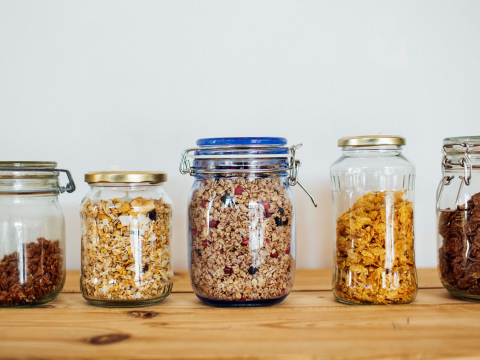By Dr. Tim Arnott — As we enter a new year, it is a time we begin to think about our life and what changes we would like to make. According to Statista’s Global Consumer Survey, 39 percent of U.S. adults will make a New Year’s resolution for 2022.[i] The top three this year in descending order are to exercise more, eat healthier, and lose weight.[ii] Given the ongoing Coronavirus pandemic, these three are well-advised. Patients significantly overweight are at higher risk of mortality from COVID-19 infection.[iii] This higher risk may stem from a fundamental mechanism of infection.[iv] COVID utilizes the angiotensin-converting enzyme (ACE)-2 receptor for entry into our cells.
Therefore, too much of this receptor in the body can facilitate COVID entry, increasing severity. The COVID virus has a particular attraction for lung cells. Besides the lung cells, this specialized receptor is expressed in many cell types, including fat cells, kidney cells, and heart cells.
Individuals with obesity (i.e., BMI >30) have more of these “COVID access” receptors present, which may support greater virus replication and infection. This may be one reason for worse outcomes of COVID infection in people with obesity.[v] Thus, losing weight is a reasonable approach to avoid the common severe outcomes of COVID infection.
At least one key factor distinguishes individuals who are significantly overweight and/or have diabetes from individuals without such conditions; namely, greater circulating levels of glucose (higher blood sugar levels)[vi]. This factor increases the ACE (COVID-friendly) receptor expression or activity, which in turn, may worsen the severity of COVID infection. Again, high blood glucose alone can increase the expression and enzymatic activity of ACE receptors in cells.[vii] As a result, a resolution to achieve weight loss, which will lower blood sugar, makes perfect sense at the start of 2022. The question is, how? It’s a simple math formula–calories eaten must be fewer than calories burned. Therefore, moving muscles more is part of the solution. Consider prayer walking first thing each morning. If you walk at a brisk pace, depending upon your weight, you could burn off 100-200 calories.[viii] That’s 500 to 1000 calories a week, assuming you walk five days a week, or 2000 to 4000 calories burned every month. Thus, your weight would drop one pound a month, 12 pounds a year. If you want to double that, simply walk one hour at a brisk pace five days a week. Then, you’d be down 25 pounds a year. That is enough weight loss to reverse diabetes in a majority of patients who are still able to make insulin, and if 25 pounds didn’t quite reverse it, losing 50 pounds likely would.[ix] Considering that overweight and/or diabetes are associated with severe COVID disease, hospitalization, and death, this kind of weight loss could be lifesaving.
Another very powerful way to reduce blood glucose levels is to walk after every meal. Every minute walked immediately after a meal reduces your blood glucose 1-3 points. Decreasing the amount of circulating insulin and going a long way to lose significant weight could make a lifesaving difference.
Now, having said the above, you could easily wipe out any calories burned walking just by eating more. Thus, adjusting the diet is also key to successful long-term weight loss. It’s actually a simple exercise to take in fewer calories. Cooked whole grains, beans, and legumes, and fresh or frozen fruits and vegetables are 80 percent water and about 10 percent fiber.[x] Thus, they are very low in calories, and you can actually eat more volume and still lose weight by choosing these foods.[xi] The foods rich in calories are easy to spot. They are found in packages (i.e., boxes, bags, cans) with a long list of ingredients. You don’t have to read the list–just put back on the shelf any food with more than one ingredient. Further, the only other category of food rich in calories is animal products, including meat, poultry, milk, eggs, yogurt, butter, ice cream, and cheese. Limiting such foods to 10 percent of total calories or less is money in the bank toward long-term weight loss and greater protection against COVID. Fortunately, there are great unsweetened dairy substitutes to fill in the gaps, and choosing savory beans poured over well-cooked, soft, moist whole grains with a plant-based, oil-free sauce is a great low-calorie entrée.
So, go ahead. Make those New Year’s resolutions and enjoy better protection against COVID at the same time, not to mention a lower risk of heart attack, stroke, and cancer. Now, we understand the above changes are not easy and because of that, many fail to make lasting lifestyle changes. Understanding the increased protection against COVID and improved quality of life will help keep one motivated. Further, having outside help also makes a difference. Rocky Mountain Lifestyle Center was established to support anyone wanting to improve health through lifestyle change, so take advantage of our MD consultations, cooking school, coaching, or health classes by calling (303) 282-3676 anytime.
In summary, God’s health remedies are so wise, they improve multiple conditions at the same time. His whole-food, plant-based (WFPB) diet has transformed the health of thousands. No wonder He pronounced His fuel of choice for man, “Very Good”.[xii]
—Tim Arnott MD is a Board-Certified Lifestyle Medicine physician and is the medical director of Rocky Mountain Lifestyle Center; photo by iStock
[i] http://a.msn.com/01/en-us/AASFCfW?ocid=se
[ii] Ibid
[iii] Nutr Diabetes. 2020; 10: 30.
[iv] ibid
[v] ibid
[vi] Nutr Diabetes. 2020; 10: 30.
[vii] ibid
[viii] https://caloriesburnedhq.com/
[ix] Kelly J. Foundations of Lifestyle Medicine Board Review Manual, 3rd Edition.
[x] Analysis based Food Processor software (https://esha.com/products/food-processor/)
[xi] Greger M. How Not to Diet. Flatiron Books: NY, NY, ©2019.
[xii] Genesis 1:31. The Holy Bible. NKJV.



